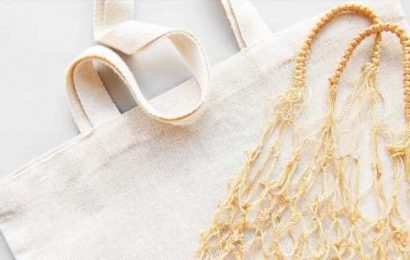NEED inspiration for keeping the kids busy over the summer holidays? You’re not alone. A survey this week revealed 60 per cent of parents have run out of ideas – and the lousy weather isn’t helping.
So why not try these five experiments conjured up by twin TV doctors Chris and Xand van Tulleken, from the BBC’s popular kids’ show Operation Ouch!
They’re safe, easy and fascinating for little ones.
- Operation Ouch! (Maverick TV) is on the CBBC Channel and BBC iPlayer.
Test your lungs
THE function of the lungs is to move oxygen from the air we breathe around your body and expel waste gases such as carbon dioxide.
Did you know the insides of your lungs look like two sponges?
But how can you tell the volume of your lungs?
YOU’LL NEED:
- An empty, shallow container, e.g. a mixing bowl, washing up bowl or even the kitchen sink
- Tap water
- A straw or bendy tube, like the sort you find in a water bottle
- Empty two-litre plastic bottle
Half-fill the container with water then completely fill the two-litre bottle with water. When the bottle is full, put your hand on the top and turn it upside down so no liquid comes out. You might want to ask an adult to help.
Stand it upside down in the shallow container and take your hand away. It is important not to let any air get into the bottle.
Take the bendy tube or straw and place one end in the neck of the bottle and keep the other end out of the water so you can blow into it.
Take a deep breath and blow through the straw or tube. Your breath will empty the water from the bottle. Keep blowing until you have emptied your lungs or the bottle, whichever happens first.
If you empty the bottle, you know your lungs have a capacity of two litres or more.
If you don’t empty the bottle, then put your hand over the top again, flip it back upright and take it out of the container. You can measure this amount of water in a measuring jug and subtract it from two litres to find out the capacity of your lungs.
You might need more than one bottle.
Dr Chris blew out 4.9 litres of water from three bottles. You will always have some air left in your lungs, even after you’ve blown out as much as you can, so the total volume is really slightly higher.
Find your blind spot
WE all have a blind spot – and this experiment shows you how to find it.
YOU’LL NEED:
- A piece of paper
- 1 red pen, 1 black pen
- A ruler
Draw a black spot on the left side of the paper. Measure 15cm to the right and draw a red spot.
Hold the paper at arm’s length. Cover or close your left eye, and with your right eye, look at the black spot.
Get someone to move the paper gradually backwards and forwards. At some point, the red spot will disappear. You’ve found your blind spot!
Guess the food
DID you know tongue receptors can detect five different tastes – salt, sweet, bitter, sour and umami, which is a rich flavour you get in cheese and mushrooms?
But around 70 per cent of taste is actually smell, because when you chew, the chemicals from your food travel up your nose, touching nerves that then send signals to your brain to tell it what that food tastes like.
YOU’LL NEED:
- A volunteer
- A blindfold
- Clothes peg
- A plate of different foods
When you are putting the peg on your volunteer’s nose, don’t use the pinchy end, as that can hurt – use the other end and put it over their nostrils. Or just pinch the end of their nose instead.
Give the volunteer a small piece of food on a fork and ask them to guess what it is. You might be surprised what the volunteer can’t taste.
Good foods to try are cheese, garlic, a slice of lemon, spicy sauce and something sweet.
Catch a criminal
YOUR fingerprints are unique to you. Although we are genetically identical as twins, our prints are different.
They form on your fingers before you are born. Police use them to catch criminals – and you can try it too.
YOU’LL NEED:
- Talcum powder or cocoa powder
- Clear sticky tape
- Hand cream or body lotion
- White, black or dark-coloured paper
- Pair of gloves
Pick a family member to be the “criminal”. Rub the lotion over their hands then ask them to handle items around the house with their greasy hands. Ask an adult which items you can handle.
Now detect the prints your criminal has left. On light-coloured items, cocoa powder works well, while talc is best for dark objects.
Shake some powder on to the object to cover it. Then shake the powder off and you should see the fingerprints. To lift the print off, take a length of tape and stick it over the fingerprint. When you peel it off, it should also lift the print.
Then stick the fingerprint down on white paper for cocoa powder and dark coloured paper for talc so you can see it.
See a soundwave
DID you know soundwaves enter your ear and make your eardrum vibrate?
These vibrations are passed on to the three ossicle bones, then on to the inner ear, which contains the cochlea, a coiled tube of liquid lined with hairs.
They send electrical signals to the brain, which is interpreted as sound.
When you are asleep, your ears are still hearing things but your brain turns on the mute button.
YOU’LL NEED:
- A bowl
- Clingfilm
- Handful of rice
- Baking tray or similar flat metal surface
- Ladle, pasta spoon or wooden spoon
Tightly stretch the clingfilm over the bowl then put the rice on top of the clingfilm. If someone in your house has a phone with a slow-motion camera you might like to use it to film the experiment, but it’s not necessary.
Hold the baking tray near the rice and tap it with the ladle. You will see the rice dance.
The grains move because of the sound waves.
Source: Read Full Article












